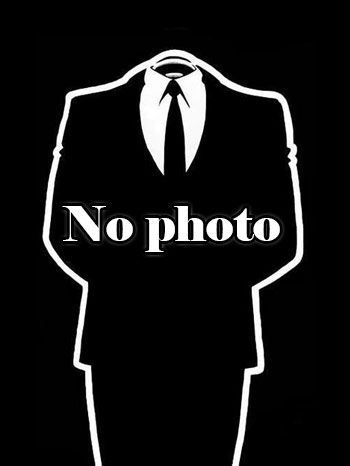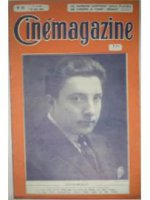Edmund Breon is a Actor British born on 11 december 1882 at Hamilton (United-kingdom)

Edmund Breon (12 December 1882 – 1951) was a Scottish film actor. He appeared in 131 films between 1907 and 1952.
Born Iver Edmund de Breon MacLaverty in Hamilton, South Lanarkshire, he began in John Hare's touring company and later played on the West End stage and in Glasgow, gaining prominence. According to his grandson, film editor, Breon "started out at the turn of the century doing silent pictures in France. Vampire movies", so it is reasonably certain that MacLaverty is indeed the actor who appeared under the name Edmond Bréon in many Gaumont films 1907-1922 including, most famously, playing the part of Inspector Juve for Louis Feuillade in the ground-breaking Fantômas series. He did also appear in a small part in the 1915-1916 Feuillade series Les vampires although this is not, as his grandson supposes, a horror film. He returned to Britain where he made the film A Little Bit of Fluff (1928) then went to Canada in 1929 and worked on the land. A year later he emigrated to the United States and gained his first big American film part in The Dawn Patrol (1930).
His grandson also recalls that he played the role of Dr. Ambrose in Howard Hawks’ The Thing from Another World (1951).
Breon died in his native Scotland in 1951, aged 68, although the date, cause and place are unknown.
Au cinéma, il apparaît d'abord durant la période du muet, dans des films français (dont de nombreux courts métrages) sortis à partir de 1909, où il est le plus souvent crédité Edmond Bréon et quasiment tous réalisés par Louis Feuillade. Ainsi, il est l'inspecteur Juve dans les cinq films que celui-ci consacre à Fantômas (avec René Navarre dans le rôle-titre), dont Juve contre Fantômas (1913) et Le Faux Magistrat (1914). Aux côtés du même Louis Feuillade, mentionnons également Les Vampires (1916, avec Musidora et Édouard Mathé) et Barrabas (1920, avec Fernand Herrmann et Édouard Mathé). Son dernier film français est L'Écuyère de Léonce Perret (avec Jean Angelo), sorti en 1922.
Puis il entame une seconde période à l'écran avec un premier film britannique (et dernier muet) sorti en 1928, A Little Bit of Fluff de Wheeler Dryden et Jess Robbins (avec Sydney Chaplin et Betty Balfour). Suit un premier film américain (et premier parlant) sorti en 1930, La Patrouille de l'aube d'Howard Hawks (avec Richard Barthelmess et Douglas Fairbanks Jr.).
Dans les années 1930, il participe surtout à des films britanniques, dont La Vie privée de Don Juan d'Alexander Korda (1934, avec Douglas Fairbanks et Merle Oberon) et Vive les étudiants de Jack Conway (1938, avec Robert Taylor et Maureen O'Sullivan).
En 1940, année de sortie de son dernier film britannique, Edmund Breon s'installe aux États-Unis en raison de la Seconde Guerre mondiale. Désormais, il tourne exclusivement des films américains (sortis à partir de 1944), le dernier étant Les Fils des Mousquetaires de Lewis Allen (avec Cornel Wilde et Maureen O'Hara), sorti en 1952, l'année suivant sa mort (1951). Citons aussi La Femme au portrait de Fritz Lang (1944, avec Edward G. Robinson et Joan Bennett), La Clef de Roy William Neill (1946, avec Basil Rathbone et Nigel Bruce) et Le Défi de Lassie de Richard Thorpe (1949, avec Edmund Gwenn et Donald Crisp).
Source : Wikidata
Edmund Breon

- Infos
- Photos
- Best films
- Family
- Characters
- Awards
Birth name Iver Edmund de Breon MacLaverty
Nationality United-kingdom
Birth 11 december 1882 at Hamilton (United-kingdom)
Death 24 june 1953 (at 70 years)
Nationality United-kingdom
Birth 11 december 1882 at Hamilton (United-kingdom)
Death 24 june 1953 (at 70 years)
Born Iver Edmund de Breon MacLaverty in Hamilton, South Lanarkshire, he began in John Hare's touring company and later played on the West End stage and in Glasgow, gaining prominence. According to his grandson, film editor, Breon "started out at the turn of the century doing silent pictures in France. Vampire movies", so it is reasonably certain that MacLaverty is indeed the actor who appeared under the name Edmond Bréon in many Gaumont films 1907-1922 including, most famously, playing the part of Inspector Juve for Louis Feuillade in the ground-breaking Fantômas series. He did also appear in a small part in the 1915-1916 Feuillade series Les vampires although this is not, as his grandson supposes, a horror film. He returned to Britain where he made the film A Little Bit of Fluff (1928) then went to Canada in 1929 and worked on the land. A year later he emigrated to the United States and gained his first big American film part in The Dawn Patrol (1930).
His grandson also recalls that he played the role of Dr. Ambrose in Howard Hawks’ The Thing from Another World (1951).
Breon died in his native Scotland in 1951, aged 68, although the date, cause and place are unknown.
Biography
Edmund Breon (nom de scène) débute au théâtre vers le début des années 1900 dans son pays natal, se produisant notamment durant sa carrière à Londres (ex. : Loyalties de John Galsworthy en 1922, avec Ian Hunter et Cathleen Nesbitt) et à Glasgow. De plus, il joue deux pièces à Broadway (New York), la première en 1931 ; la seconde, représentée 477 fois de novembre 1940 à janvier 1942, est Le blé est vert d'Emlyn Williams (avec Ethel Barrymore et Rhys Williams).Au cinéma, il apparaît d'abord durant la période du muet, dans des films français (dont de nombreux courts métrages) sortis à partir de 1909, où il est le plus souvent crédité Edmond Bréon et quasiment tous réalisés par Louis Feuillade. Ainsi, il est l'inspecteur Juve dans les cinq films que celui-ci consacre à Fantômas (avec René Navarre dans le rôle-titre), dont Juve contre Fantômas (1913) et Le Faux Magistrat (1914). Aux côtés du même Louis Feuillade, mentionnons également Les Vampires (1916, avec Musidora et Édouard Mathé) et Barrabas (1920, avec Fernand Herrmann et Édouard Mathé). Son dernier film français est L'Écuyère de Léonce Perret (avec Jean Angelo), sorti en 1922.
Puis il entame une seconde période à l'écran avec un premier film britannique (et dernier muet) sorti en 1928, A Little Bit of Fluff de Wheeler Dryden et Jess Robbins (avec Sydney Chaplin et Betty Balfour). Suit un premier film américain (et premier parlant) sorti en 1930, La Patrouille de l'aube d'Howard Hawks (avec Richard Barthelmess et Douglas Fairbanks Jr.).
Dans les années 1930, il participe surtout à des films britanniques, dont La Vie privée de Don Juan d'Alexander Korda (1934, avec Douglas Fairbanks et Merle Oberon) et Vive les étudiants de Jack Conway (1938, avec Robert Taylor et Maureen O'Sullivan).
En 1940, année de sortie de son dernier film britannique, Edmund Breon s'installe aux États-Unis en raison de la Seconde Guerre mondiale. Désormais, il tourne exclusivement des films américains (sortis à partir de 1944), le dernier étant Les Fils des Mousquetaires de Lewis Allen (avec Cornel Wilde et Maureen O'Hara), sorti en 1952, l'année suivant sa mort (1951). Citons aussi La Femme au portrait de Fritz Lang (1944, avec Edward G. Robinson et Joan Bennett), La Clef de Roy William Neill (1946, avec Basil Rathbone et Nigel Bruce) et Le Défi de Lassie de Richard Thorpe (1949, avec Edmund Gwenn et Donald Crisp).
Usually with
Filmography of Edmund Breon (116 films)
Actor

At Sword's Point (1952)
, 1h21Directed by Lewis Allen
Origin USA
Genres Swashbuckler, Action, Adventure
Themes Politique, Political films, Films about royalty
Actors Cornel Wilde, Maureen O'Hara, Robert Douglas, Gladys Cooper, Dan O'Herlihy, Alan Hale Jr.
Roles Queen's Chamberlain
Rating60%





The sons (and a daughter) of the original Four Musketeers ride to the rescue of besieged Queen Anne in 1648 France.
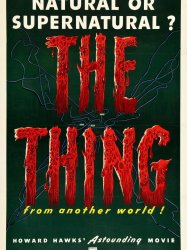
The Thing from Another World (1951)
, 1h26Directed by Howard Hawks
Origin USA
Genres Drama, Science fiction, Horror
Themes Films based on science fiction novels, Films about extraterrestrial life, Political films, Films about extraterrestrial life
Actors Margaret Sheridan, Kenneth Tobey, Douglas Spencer, Dewey Martin, Robert O. Cornthwaite, James Arness
Roles Prof. Ambrose
Rating70%





A United States Air Force crew is dispatched by General Fogerty (David McMahon) from Anchorage, Alaska at the request of Dr. Carrington (Robert Cornthwaite), the chief scientist of a North Pole scientific outpost. They have evidence that an unknown flying craft crashed nearby, so Reporter Ned Scott (Douglas Spencer) tags along for the story.

Rope of Sand (1949)
, 1h44Directed by William Dieterle
Origin USA
Genres Drama, Thriller, Action, Adventure
Themes Films set in Africa
Actors Burt Lancaster, Paul Henreid, Claude Rains, Corinne Calvet, Peter Lorre, Sam Jaffe
Roles Parker, Chairman of the Board
Rating65%





Hunting guide Mike Davis (Burt Lancaster) comes across a cache of diamonds in a remote region of South West Africa, but refuses to reveal its location even under torture at the hand of the diamond company's security chief, Vogel.
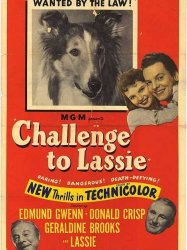
Challenge to Lassie (1949)
, 1h16Directed by Richard Thorpe
Origin USA
Genres Drama, Comedy-drama, Action, Adventure
Themes Films about animals, Films about dogs, Mise en scène d'un mammifère
Actors Donald Crisp, Edmund Gwenn, Geraldine Brooks, Pal, Sara Allgood, Alan Webb
Roles Magistrate
Rating61%





Jock Gray (Donald Crisp) raises his collie Lassie to be an extraordinary sheep dog and companion. When he is beaten to death by robbers after he retires, Lassie keeps vigil over his grave and refuses to let anyone else take ownership of her. However, the law requires that all dogs be leashed and licensed by a legal owner. With no owner to pay her license and her only "home" being the church graveyard, Lassie faces an uncertain future.

Hills of Home (1948)
, 1h37Directed by Fred M. Wilcox
Origin USA
Genres Drama, Action, Adventure
Themes Films about animals, Films about dogs, Mise en scène d'un mammifère
Actors Edmund Gwenn, Pal, Donald Crisp, Tom Drake, Janet Leigh, Rhys Williams
Roles Jamie Soutar
Rating65%





Dr. William MacLure (Edmund Gwenn) a Scottish doctor, adopts Lassie, who has an unnatural aversion to water. The Dr. tries to cure Lassie of her fears, but she remains water-shy.
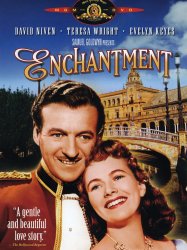
Enchantment (1948)
, 1h40Directed by Irving Reis
Origin USA
Genres Drama, Romance
Themes Films about children, Political films
Actors David Niven, Teresa Wright, Evelyn Keyes, Farley Granger, Jayne Meadows, Leo G. Carroll
Roles Uncle Bunny
Rating71%





In World War II London, a bold American servicewoman named Grizel Dane (Evelyn Keyes) pays a visit to her granduncle, aged General Sir Roland 'Rollo' Dane (David Niven), looking for a place to stay. At first reluctant to disturb his routine, Rollo soon gives in.
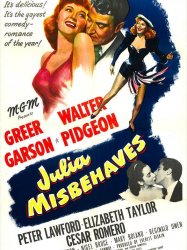
Julia Misbehaves (1948)
, 1h39Directed by Jack Conway
Origin USA
Genres Comedy, Romantic comedy, Romance
Actors Greer Garson, Walter Pidgeon, Peter Lawford, Elizabeth Taylor, Cesar Romero, Lucile Watson
Rating67%





In 1936 London, mature showgirl Julia Packett (Greer Garson) leads a precarious life. She pretends to be contemplating suicide in order to finagle some money out of a male friend in order to pay her bills. Then, she receives a wedding invitation from her daughter Susan (Elizabeth Taylor). As a young woman, Julia had married wealthy William Packett (Walter Pidgeon). However, after fourteen months of marriage, his disapproving mother (Lucile Watson) had managed to break them up. Julia returned to show business, but left her infant daughter with her husband, so that the child could be raised in more secure circumstances.

Forever Amber (1947)
, 2h18Directed by Otto Preminger, John M. Stahl
Origin USA
Genres Drama, Historical, Melodrama, Romance
Themes Children's films
Actors Linda Darnell, Cornel Wilde, Richard Greene, George Sanders, Richard Haydn, Glenn Langan
Roles Lord Redmond
Rating64%





The film begins in 1644 during the English Civil War, as we see a group of Roundheads pursuing a Cavalier's carriage. The carriage drives into the country where its passengers abandon a baby, named Amber, on the doorstep of a farming cottage. The roundheads soon catch up with the carriage and kill all the passengers while the farmers discover and decide to adopt Amber.
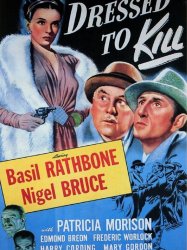
Dressed to Kill (1946)
, 1h16Directed by Roy William Neill
Origin USA
Genres Drama, Thriller, Crime
Themes Sherlock Holmes films, Buddy films
Actors Basil Rathbone, Nigel Bruce, Patricia Morison, Holmes Herbert, Frederick Worlock, Edmund Breon
Roles Julian 'Stinky' Emery
Rating67%





A convicted thief in Dartmoor prison (played by an uncredited Cyril Delevanti) hides the location of stolen Bank of England printing plates inside three music boxes (each of which plays a subtly different version of "The Swagman"). The boxes are sold at a local auction house.

Devotion (1946)
, 1h47Directed by Edward Chodorov, Robert Buckner, Curtis Bernhardt
Origin USA
Genres Drama, Biography
Themes Films about writers, Films about families
Actors Olivia de Havilland, Ida Lupino, Paul Henreid, Sydney Greenstreet, Nancy Coleman, John Arthur Kennedy
Roles Sir John Thornton (uncredited)
Rating65%





The story takes place in the early 1800s, when the Brontë sisters Charlotte and Anne have made the decision to leave their family - their sister Emily, their brother Branwell, their aunt and their vicar father - to take positions as governesses in other families. The two sisters long to break free from their tedious life and get experiences from the outside world, to prepare for their careers as writers.
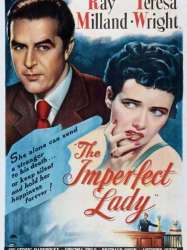
The Imperfect Lady (1946)
, 1h37Directed by Lewis Allen
Origin USA
Genres Drama, Romance
Actors Ray Milland, Teresa Wright, Cedric Hardwicke, Virginia Field, Anthony Quinn, Reginald Owen
Roles Lord Chief Justice
Rating65%





In 1892, showgirls Millie and Rose have a chance encounter with Clive Loring, a politician who invites them to tea. Millie falls for Clive and vows to give up the stage, but his brother Lord Belmont nevertheless disapproves.
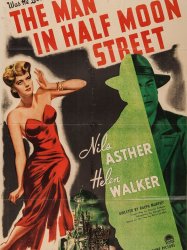
The Man in Half Moon Street (1945)
, 1h32Directed by Ralph Murphy
Origin USA
Genres Drama, Thriller, Fantasy, Horror
Actors Nils Asther, Helen Walker, Paul Cavanagh, Konstantin Shayne, Edmund Breon, Morton Lowry
Roles Sir Humphrey Brandon
Rating60%





A scientist, Dr. Karell (Asther), has found a way to prolong life (he is 120 years old) with the help of Dr. Van Bruecken (Schünzel). However, Dr. Karell has now fallen in love, and has discovered that if he doesn't get new glands, he will die.
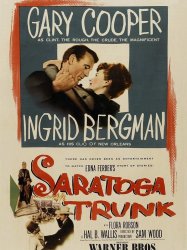
Saratoga Trunk (1945)
, 2h15Directed by Sam Wood
Origin USA
Genres Drama, Melodrama, Romance, Western
Actors Gary Cooper, Ingrid Bergman, Flora Robson, Florence Bates, Curt Bois, John Warburton
Roles McIntyre (uncredited)
Rating63%





In 1875, Clio Dulaine (Ingrid Bergman), the illegitimate daughter of an aristocratic New Orleans Creole father and a light-skinned Creole woman of color who was his placée, returns from Paris to her birthplace in Rampart Street to avenge her mother's mistreatment at the hands of her father's family, the Dulaines. Years ago, Clio's mother accidentally killed Dulaine when he tried to prevent her from committing suicide, and the scandalized Dulaines then exiled Clio and her mother to Paris. Clio is accompanied by her Haitian maid, Angelique (Flora Robson), and her dwarf manservant, Cupidon (Jerry Austin).

Casanova Brown (1944)
, 1h34Directed by Sam Wood
Origin USA
Genres Comedy, Romantic comedy, Romance
Actors Gary Cooper, Teresa Wright, Frank Morgan, Anita Louise, Edmund Breon, Patricia Collinge
Roles Mr. Drury
Rating61%





Arriving in a small Illinois town by train, Casanova Brown is met by Madge Ferris and tells her not to bring up his trip to New York.
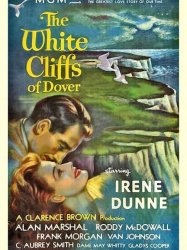
The White Cliffs of Dover (1944)
, 2h6Directed by Clarence Brown
Origin USA
Genres Drama, War, Romance
Themes Political films
Actors Irene Dunne, Alan Marshal, Roddy McDowall, Elizabeth Taylor, Frank Morgan, Gladys Cooper
Roles Rupert Bancroft (uncredited)
Rating69%





At the height of World War II, Lady Susan Ashwood (Irene Dunne) is a nurse in a British hospital, awaiting the arrival of some wounded men. She thinks back to how she came to Britain many years before.
 Connection
Connection

